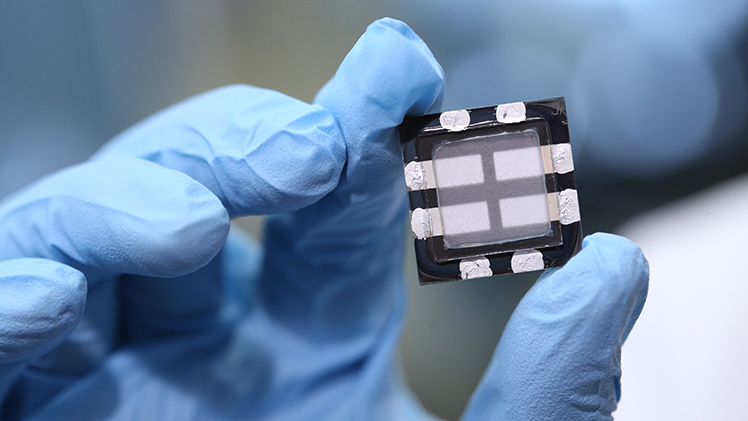An international team of physicists has identified a synthetic molecule that dramatically improves the long-term stability of perovskite solar cells, advancing this innovative technology further toward commercialization.
Among them are The University of Toledo’s Dr. Yanfa Yan and Dr. Xiaoming Wang.

A team of physicists has identified a synthetic molecule that dramatically improves the long-term stability of perovskite solar cells.
“This is an exciting advancement that addresses a known limitation of inverted perovskite solar cells,” said Yan, a world-class leader in the research and development of perovskites, a compound material with a special crystal structure. “It builds on a significant body of research positioning these solar cells as a lower-cost and higher-efficiency alternative to the industry standard and brings us one step closer to realizing this goal.”
Yan, a Distinguished Professor of physics and Ohio Research Scholar Chair, and Wang, a research assistant professor, collaborated with researchers at Arizona State University, CubicPV Inc., King Abdullah University of Science and Technology, Newcastle University and the U.S. Department of Energy’s National Renewable Energy Laboratory on the research published last month in the peer-reviewed journal Science.
It pertains to a key component of perovskite solar cells called the electron transfer layer, which facilitates that complex shift of electrons that produces energy.
Physicists specifically zeroed in on the mechanical instability of this layer in conventional inverted perovskite solar cells, which almost exclusively rely on a fullerene molecule (C₆₀). Weak interfaces associated with C₆₀ lead to interfacial electronic and mechanical degradation, affecting the long-term stability of the cells.
They found that when they substituted an ionic salt synthesized from C₆₀, which they call CPMAC, they found a three-fold increase in interfacial toughness compared to C₆₀.
This allowed them to record improved device efficiency and stability, including rates among the best on record for scaled-up minimodules measuring about six square centimeters.
Yan and Wang work out of UToledo’s Wright Center for Photovoltaics Innovation and Commercialization, where researchers are accelerating the growth of the photovoltaic industry by driving advancements in technology, reducing costs and fostering innovation.
Yan, who ranks among world’s most influential researchers according to the data analytics firm Clarivate, regularly collaborates on ground-breaking research advancing the efficiency, durability and stability of perovskite solar cells in high-profile journals including Science and Nature.